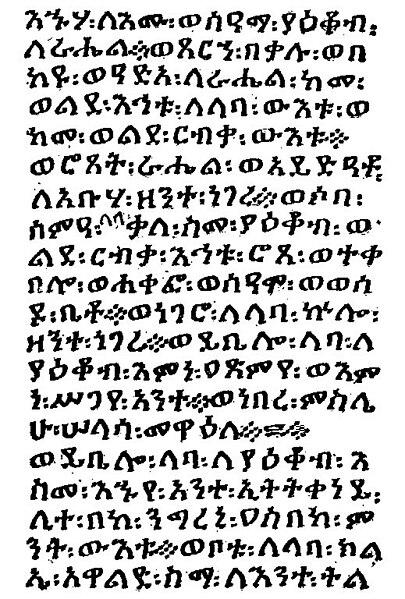Three alphabets are used to write Kazakh: the Cyrillic, Latin and Arabic scripts. The Cyrillic script is used in Kazakhstan and Mongolia. An October 2017 Presidential Decree in Kazakhstan ordered that the transition from Cyrillic to a Latin script be completed by 2031. The Arabic script is used in Saudi Arabia, Iran, Afghanistan, and parts of China.

A 1902 Kazakh text in both Arabic and Cyrillic scripts. In modern orthography: «Бұрыңғы өткен заманда, бір данышпан кісі, Бағдат шаһарының бір үлкен қазысының үйіне келіп қоныпты. Қазыменен сөйлесіп, қазыны сөзге жеңе беріпті. Сонда қазы қорқып, — „Бұл маған келген бала — менің қазылығымды тартып алса керек! Не де болса, бұған жалынып, сый беріп, орнымда қалайын!“ — деп, қатынына ақылдасыпты.» Transliteration: «Būryñğy ötken zamanda, bır danyşpan kısı, Bağdat şaharynyñ bır ülken qazysynyñ üiıne kelıp qonypty. Qazymenen söilesıp, qazyny sözge jeñe berıptı. Sonda qazy qorqyp, — „Būl mağan kelgen bala - menıñ qazylyğymdy tartyp alsa kerek! Ne de bolsa, būğan jalynyp, syi berıp, ornymda qalaiyn!“ — dep, qatynyna aqyldasypty.»
Kazakh Arabic and Latin script in 1924
A Kazakh newspaper Socialist Kazakhstan (Социалды Қазағыстан, Sotsialdy Qazağystan) in Latin script (1937)
Selected works of Mao Zedong (Мау Зыдоң Таңдамалы Шығармалары, Mau Zydoñ Tañdamaly Şyğarmalary) in Latin-script Kazakh, published in Beijing in 1977
An alphabet is a standard set of letters written to represent particular sounds in a spoken language. Specifically, letters correspond to phonemes, the categories of sounds that can distinguish one word from another in a given language. Not all writing systems represent language in this way: a syllabary assigns symbols to spoken syllables, while logographies assign symbols to words, morphemes, or other semantic units.
A photo of the Old Hungarian script
Ge'ez Script of Ethiopia and Eritrea






